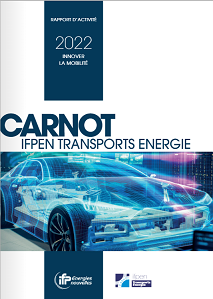19.09.2023
2 minutes of reading
Two Carnot institutes, Clim’adapt (Cerema) and IFPEN Transports Energie, joined forces to conduct a study aimed at making life easier and safer for cyclists in urban and suburban areas. The work focused on intersections with traffic lights since these are the locations where the risk of accidents is greatest.
Three study phases
The first phase of the study identified an intersection in Bordeaux where accidents are common and where the introduction of communicating traffic lights for cyclists may be an effective solution. During the second phase, data were collected relating to light vehicle and bicycle flows at this same location in order to observe user behavior. The data collected were supplemented with other types of information (weather, cyclist behavior, etc.). Thirdly, using the data collected, the final phase consisted in conducting a dynamic simulation on the SUMO* software to manage a traffic light intersection optimized for cyclists, via a C-ITS (Cooperative Intelligent Transport System), and test several scenarios.
Analysis of road flows and typical days
The simulation model was calibrated on the basis of an analysis of the data collected relating to the number of light vehicles and bicycles passing through the intersection selected in Bordeaux. Two “typical” days were defined (one favorable to cyclists and one unfavorable), as well as their annual frequency, in order to make projections for the year as a whole concerning the benefits of introducing a smart traffic light system. The research was reinforced by the integration of exogenous data such as weather, making it possible to better understand the cause of daily flow fluctuations and the correlations between the two modes of transport.
Complementary data thanks to GECO air
 The model was enriched by data obtained from the GECO air mobile application. These additional data, which go beyond flow analysis, provided invaluable information relating to cyclists’ behavior (position on the road, intersection approach speed, etc.), behavior which may or may not be associated with increased risks. The resulting cyclists’ model was therefore more realistic, increasing the reliability of the simulations.
The model was enriched by data obtained from the GECO air mobile application. These additional data, which go beyond flow analysis, provided invaluable information relating to cyclists’ behavior (position on the road, intersection approach speed, etc.), behavior which may or may not be associated with increased risks. The resulting cyclists’ model was therefore more realistic, increasing the reliability of the simulations.
Did you know?
The GECO air mobile application, developed by IFPEN with the support of Ademe (the French Environment and Energy Management Agency), is designed to make users more aware of the environmental impact of their journeys (vehicle, public transport, cycling, walking) and show them how they, as individuals, can take action to reduce their emissions.
Two Carnot Institutes, the same objective: cyclist safety
The study conducted by teams from the Clim’Adapt and IFPEN Transports Energie Carnot Institutes, taking into account a variety of data relating to light vehicle and cyclist flows at a dangerous intersection, demonstrated the full potential of simulation and C-ITS, such as communicating traffic lights, for improving cyclist safety at high-risk intersections without impeding traffic flows.
* SUMO (Simulation of Urban MObility) is an open-source portable multimodal traffic simulation platform designed to handle large networks.
Learn about other actions conducted by teams from the Transports Energie Carnot Institute in the 2022 Transports Energie Carnot Institute report







